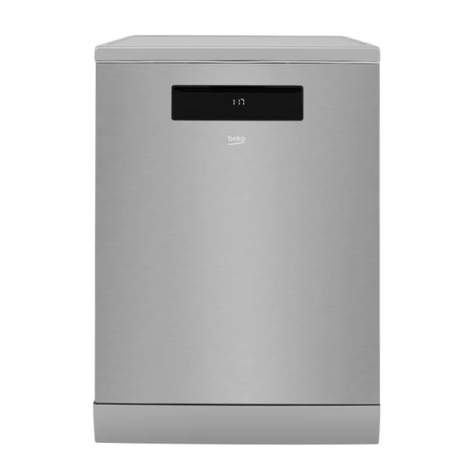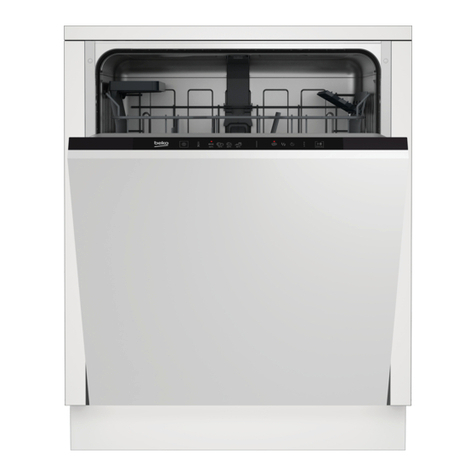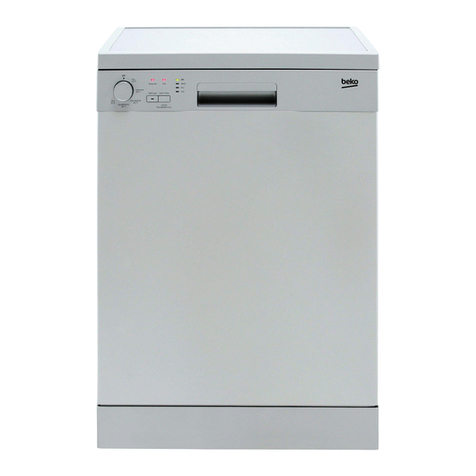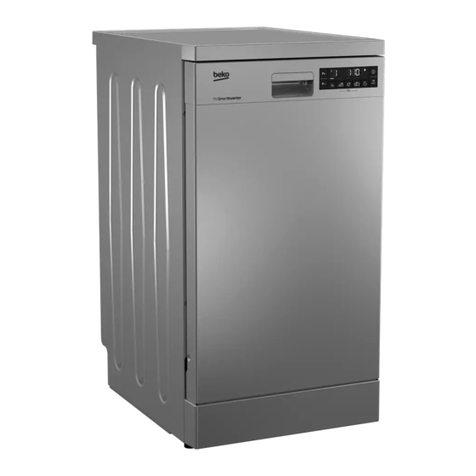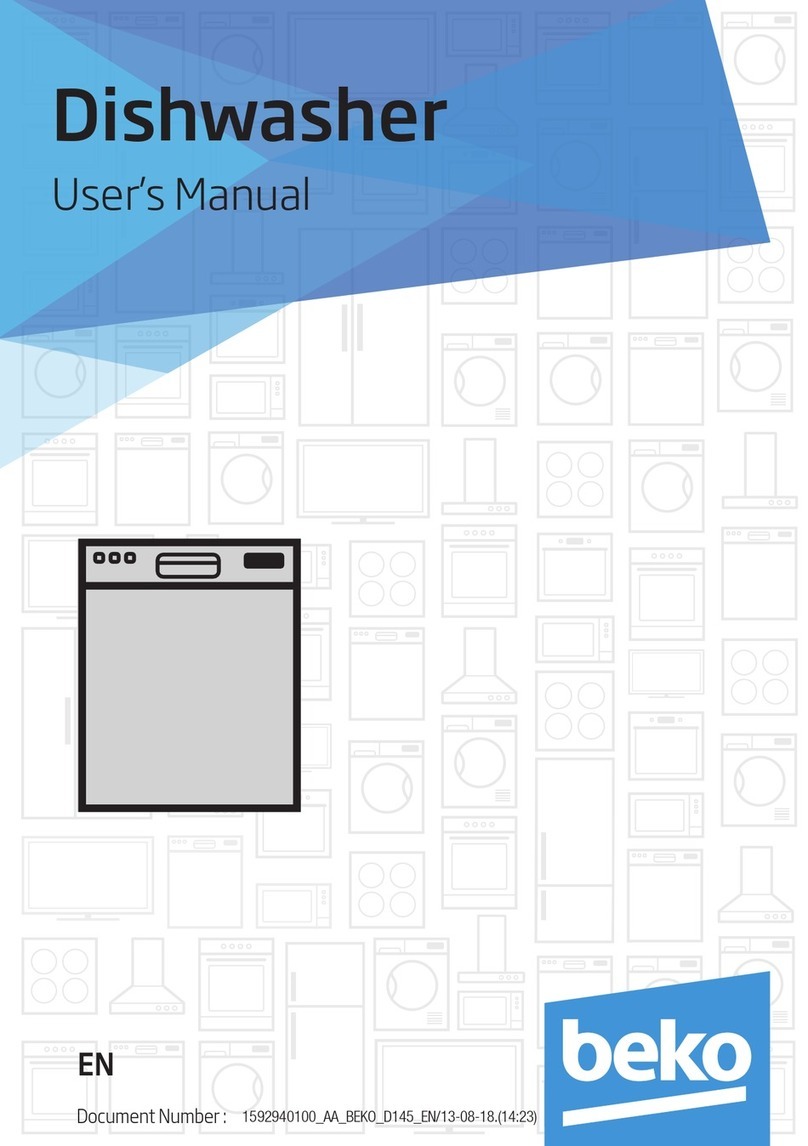
The water in the dishwasher is not•
drinking water. Danger of caustic
injuries.
Always place long and sharp/•
pointed objects (e.g. serving forks,
bread knives) into the cutlery
basket with the pointed end down
or flat on the upper basket to avoid
possible injuries.
For daily operation
Use your appliance only for the•
following domestic uses: Washing
household dishes.
Do not use chemical solvents in•
the appliance; there is a danger of
explosion.
This appliance is not intended for•
use by persons (including children)
with reduced physical, sensory
or mental capabilities, or lack of
experience and knowledge, unless
they have been given supervision
or instruction concerning use
of the appliance by a person
responsible for their safety.
Do not sit or stand on the opened•
door or place other objects on it.
The appliance may tip over.
Do not open the door while the•
appliance is running, as hot water
or steam may escape.
Do not leave the door open – an•
open door can be a hazard.
If you need to move your•
appliance, do it in upright position
and hold from the rear side. Tilting
the appliance onto its front side
may cause the electronic parts in it
to get wet and damaged.
Problems
Repairs and modifications to the•
appliance may only be carried
out by qualified customer service
personel.
In the event of a problem, or before•
performing a repair, disconnect the
appliance from the mains supply:
- disconnect the appliance by
pulling out the mains plug
- shut off the power.
Do not pull on the cable – pull on•
the plug. Turn off the water supply
tap.
What should not be washed in
your dishwasher
Rust sensitive steel parts•
Cutlery with wooden or horn•
handles
Cutlery with mother of pearl or•
porcelain handles
Non heat resistant plastic parts•
No glued dish or cutlery parts•
No items made out of copper, tin or•
aluminium
Sensitive decorative glasses and•
porcelain parts
Lead crystal glasses•
Art and crafted articles•
Aluminium and silver tend to•
discolour
Glass and crystal articles may lose•
their shine over time
Sponges and dishcloths•
Do not wash items soiled with
cigarette ash, candle wax, varnish,
paints or chemicals.
Recommendation: When buying new
dishes, note whether they are suitable
for the dishwasher. (marked as
dishwasher proof)
